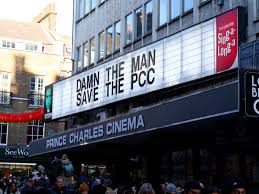The Southbank Centre: A Hub of Culture and Creativity

Introduction
The Southbank Centre, located on the south bank of the River Thames in London, is one of the largest cultural complexes in the UK. Opened in the late 20th century, it has become a landmark of arts and culture, hosting a myriad of events, performances, and exhibitions. Understanding the importance of the Southbank Centre provides insight into its role in promoting the arts and fostering community engagement.
Overview of the Southbank Centre
Housing several renowned venues, including the Royal Festival Hall, the Queen Elizabeth Hall, and the Hayward Gallery, the Southbank Centre offers a diverse range of cultural programming. From music concerts and theatre performances to art exhibitions and literary festivals, it serves as a creative hub accessible to a broad audience. The Centre hosts over 1,000 events each year, welcoming millions of visitors, thus significantly contributing to London’s cultural landscape.
Recent Events and Developments
In recent months, the Southbank Centre has adapted its programming to meet the challenges posed by the ongoing COVID-19 pandemic. With safety protocols in place, the Centre reopened its doors to the public in mid-2021, featuring a series of outdoor events and installations to promote safe engagement with the arts. The Centre also launched a new initiative called ‘The Festival of Love,’ showcasing various projects aimed at exploring the theme of connection during a time of social distancing.
In addition to events, the Southbank Centre has focused on inclusivity and accessibility. Collaborating with local artists and community groups, the Centre has introduced programmes that aim to engage people from diverse backgrounds, making art available to everyone. This commitment reflects a broader trend in the arts sector towards community involvement and representation.
Conclusion: The Future of the Southbank Centre
As the Southbank Centre looks ahead, it will continue to play a vital role in the cultural vitality of London and the UK. Forecasts suggest that the focus on digital programming and hybrid events will remain a pivotal part of their strategy, catering to audiences both in-person and online. This evolution is crucial in ensuring that the arts thrive amid changing societal dynamics.
In conclusion, the Southbank Centre not only stands as a beacon of creativity and cultural expression but also embodies the resilience and adaptability of the arts community in the face of difficulties. Its importance in shaping the cultural discourse in the UK cannot be overstated, making it a vital institution to watch in the years to come.








